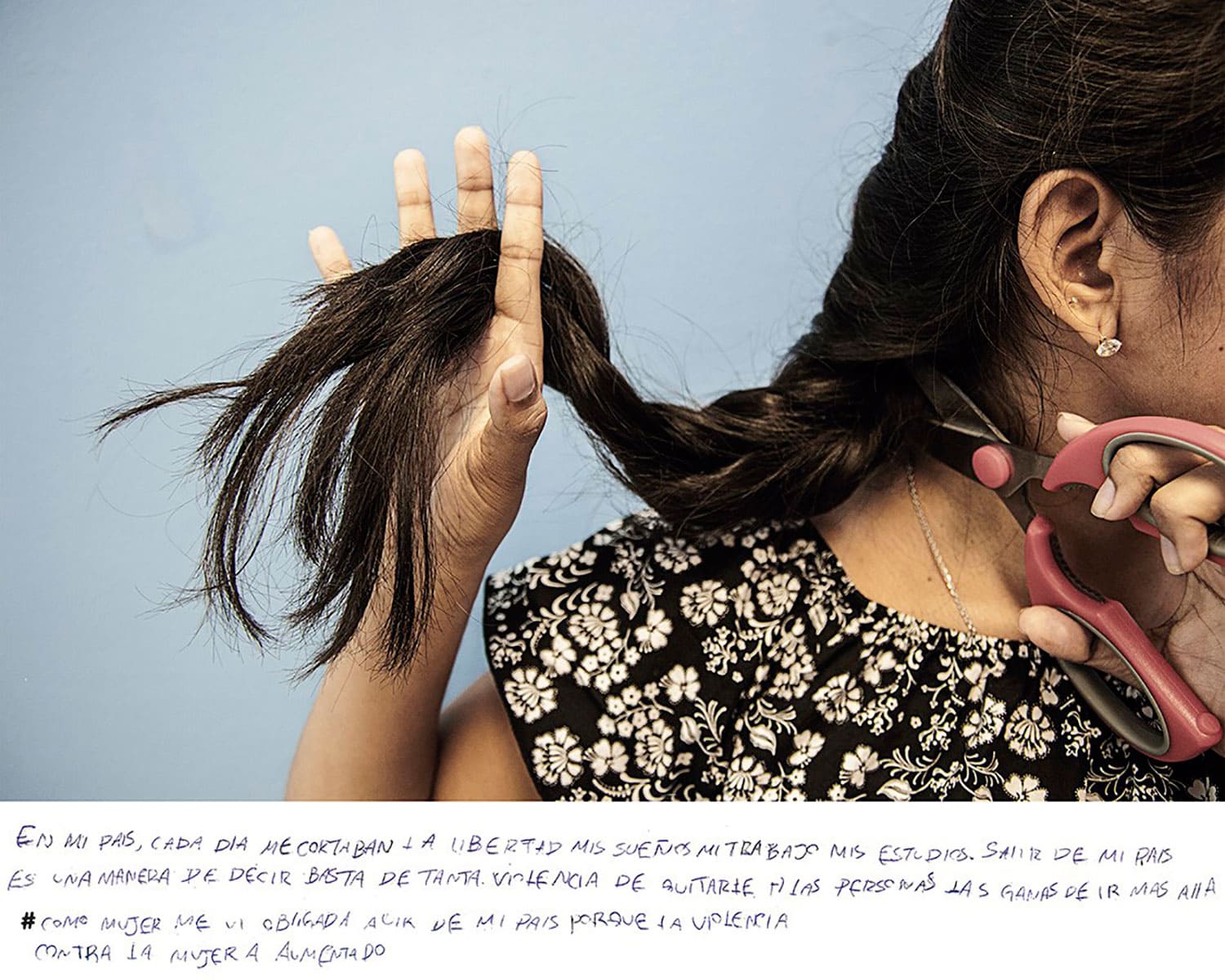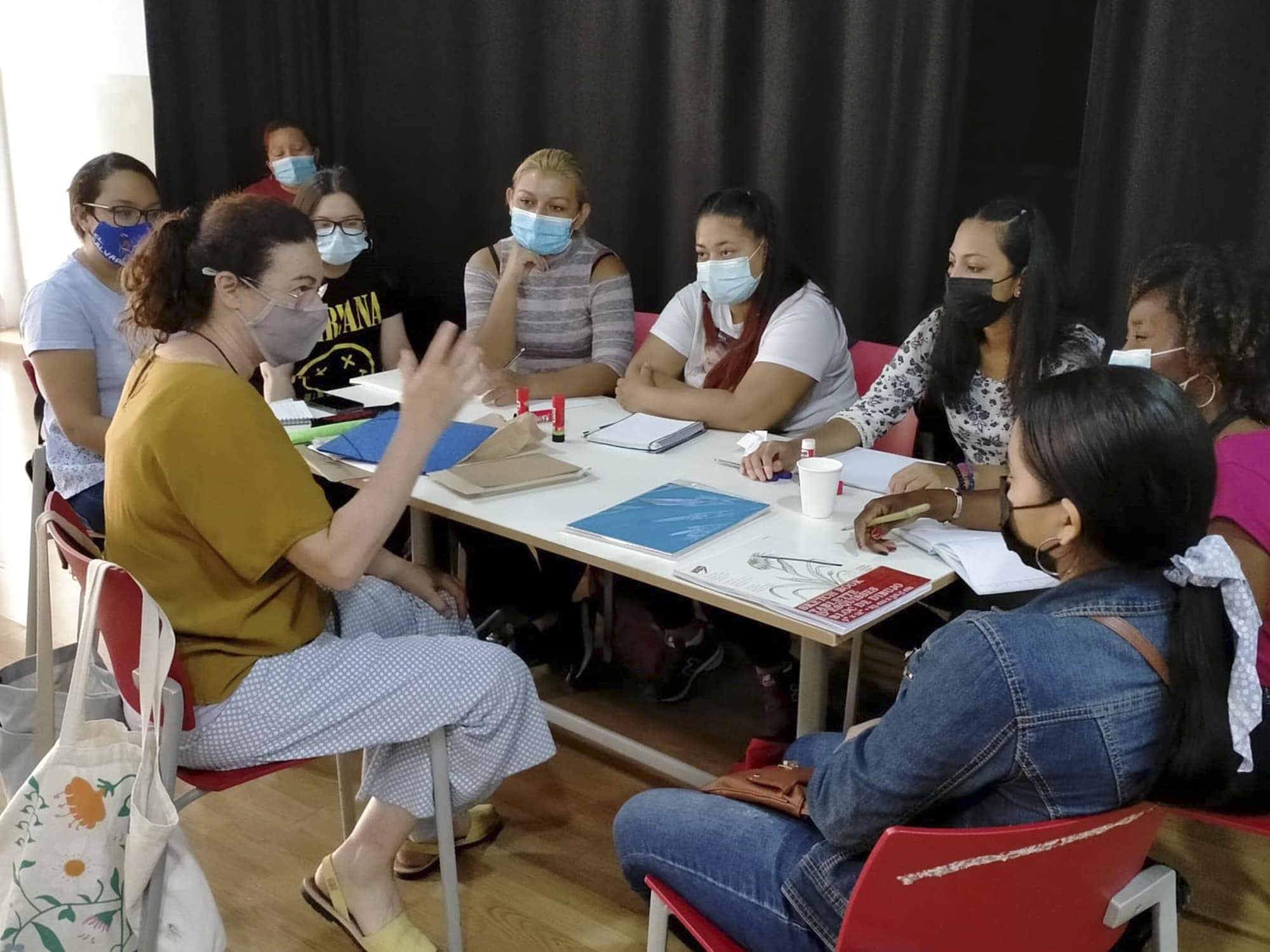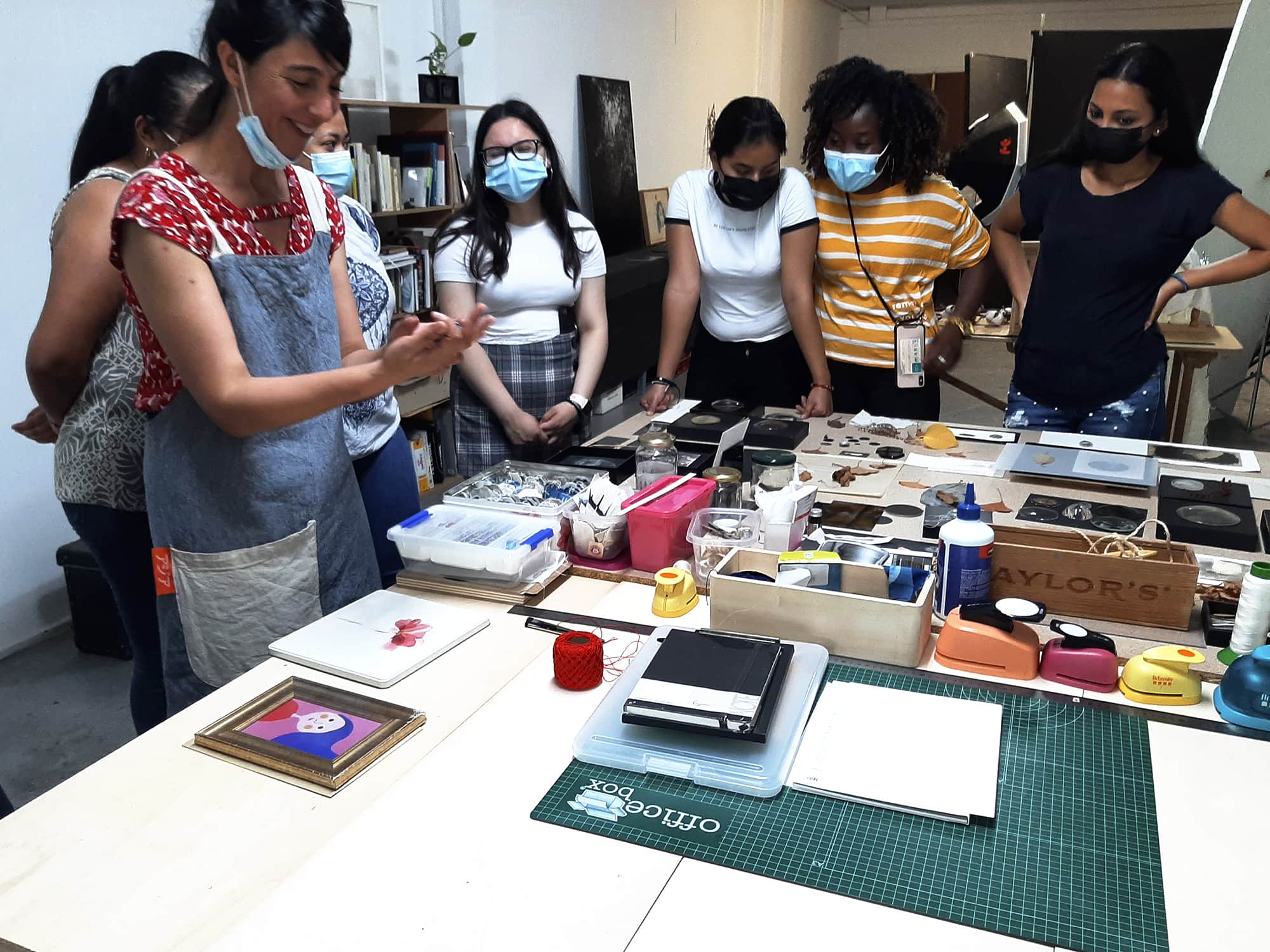
Miradas con voz: what do they want to say?
Photography as a tool. Photography as a language. Photography is a way women communicate around the world. Mariona Giner, the coordinator of the Miradas con Voz 2021 photographic contest, follows that idea. It is one of the projects of Doctors of the World Catalunya and Doctors of the World in El Salvador and is the result of the workshops that are attended by women who have gone through traumatic processes of humanitarian emergency, structural violence, social violence, or who have been deprived of liberty.
Mariona says that they are based on the idea of participatory photography “as a social mediator”. Also, they identified that, although there are many projects in this sense, nothing brought them together and organized them. Thus was born the idea of the web, as a space to give visibility

What are the workshops about?
In the first edition, Doctors of the World Catalunya (with whom I work doing participatory photography training) proposed to me to do a contest in which those who applied were the workshop students. Here in Catalunya, we work with women who are victims of gender violence. So we wanted to focus on women who have participated in workshops of this type, photography.
In the second edition, we met with Doctors of the World in El Salvador and we decided to expand and change completely. Also, it is post-pandemic. We have had to adapt to working online with people in vulnerable situations and at the same time, we have been doing online workshops in El Salvador. It has been a truly incredible experience. We have wanted to transfer the experience to this photographic contest. The idea is that the website that we have created (which is now in a first phase, then it will enter a second and third phase) serves as a platform where the work can be exhibited. Not only the photographic works that have been selected in this contest but the work of the different organizations and photographers that work with participatory photography.
What interests us is to create a reference and a network where all this work can be appreciated, which is a lot, because it is not visible. At least here in Spain, we are all very scattered, there is no such structure. So we wanted to structure this a bit, in addition to being able to make visible works that are of excellent quality, phenomenal photographic works are made.
Do you run workshops with women in both Catalunya and El Salvador?
Yes. In El Salvador, it was the first pilot program in 2016. But this year, after the Covid, we have taught a blended one: I taught online for three months and the students came from El Salvador to Barcelona for ten days. In July we finished. They were women who had been deprived of liberty and so it was very intense and completely new.
In Catalunya, we work with Médicos del Mundo with women who have been victims of gender violence. With other organizations with which I work with participatory photography, I have many different profiles: unemployed people, people who have been without work for more than 45 years, victims of family violence, women who are in the world of prostitution, young mothers, victims of sexual harassment in childhood.

How would you define participatory photography?
We refer to processes of accompaniment and empowerment through photography, with people who have gone through traumatic events of humanitarian emergency, structural violence, social violence. Within the labor and social reintegration programs, we also work with creative programs. Some work with theater, others with music, and others with photography within these processes.
And what happens to these women deprived of liberty when they find photography as a tool?
I can tell you some specific anecdotes, as an example. A person who came from a situation of violence. Our motto was “for a life without violence.” So she, on her account, decided to do a kind of dramatization of her own experiences. She chose to do it with her brother. It was a taboo between them. They had never talked about what they experienced. Then all of a sudden she chose this with him and they recaptured and did this process together. For the first time as adults, they talked about a series of things that they had never discussed in their life. For many women, it is the beginning, without even looking for it, to repair the damage. Just starting this damage repair opens an important door. This is at the personal level.
But other very important processes are also cultural. For example, there are the typical processes of social reintegration: learning four tools that will allow you to enter the world of work, such as working as a cashier to say something in a supermarket. Nevertheless, at the cultural level, there is no impact at all. And then it is this openness to having other types of resources and other ways of thinking, of understanding advertising, of understanding the world that surrounds us in images. We aim to open doors, opening different channels that not only enrich the person but also enrich their future. This is important. To the point, I will tell you, that in the past we have had people who later dedicate themselves to photography or related things.
What effects does photography produce?
From the beginning, it opens doors for them to communicate with each other. This is one of the most important elements. There are many barriers when we have a group of ten or fifteen women who come from terrible stories, there is no openness and support or sisterhood between them. It does not exist, there are a lot of suspicions, there are a lot of ways of being on the defensive, of not communicating, of aggressiveness. So there is a very important point, which is that we start with fun, taking photos. Fun breaks a lot of barriers. The idea of, for example, exchanging cultural customs. So we started with an exercise of bringing something from our country, traditional, or dressing, putting on makeup, and photographing it. So we explain it together and now only with this exercise, we are indirectly breaking barriers, lowering our guard.
Other ways are going out with a camera and daring to photograph things that would not normally be photographed and then being able to talk about what has caught our attention. The camera is an excuse to open doors and then we can begin to work on issues that interest us about self-esteem, respect, communication with others, and among ourselves. On the other hand, we do things purely from the theory of photography, color, composition. We meet artists, photographers, we talk about the world of photography, and then this cultural interest opens up, and there begin to be debates about the aesthetics of photography. It is very empowering to see that we have criteria, we can debate, we have an interest in things that are not always talking about our situation as a victim of violence. It’s a relief.
It helps you rebuild subjectivity, doesn’t it?
Yes, it is interesting to see it like this, in the end, it is that. Then we always have a final project. But this project is usually something that we all discuss. The result can be an exhibition. All the management of the exhibition, setting up the exhibition, seeing it, inviting people to make an opening is a terrific process of providing tools of all kinds: social, organizational, group dynamics, and so on. All of that is phenomenal. In addition, sometimes issues related to their own experiences are worked on, and sometimes they are urban landscapes, so we go purely to the aesthetic. This whole process is long.
What do you want to achieve with the contest?
I share the dream of Doctors of the World Catalunya. One, to give visibility to the work that is done in these workshops, which are of excellent quality. But, in addition, it is possible to have a reference to the work that organizations do with photography. Photography goes much further than the great international awards, in recognition of professional photographers, it has more outlets, more uses. The idea is that the web is a place of reference, that people can enter and see what it is, the reflections of the same people who have gone through these processes, that the situations experienced by these women become visible. In the end, it is a protest project. It demands to be known the places these people come from, what their experiences are and what they want to say.


